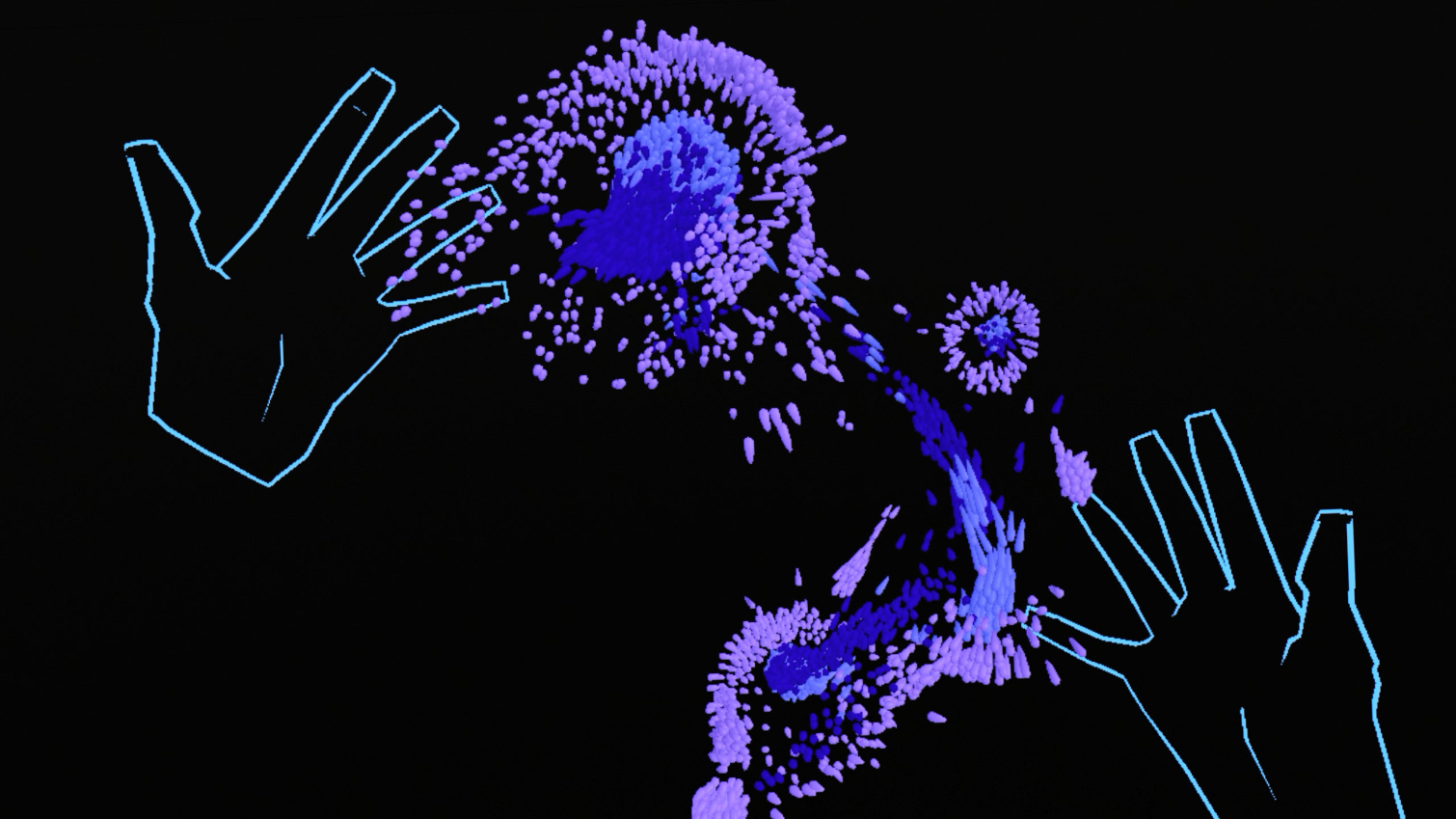Leap Motion Hones Finger Tracking Fidelity With Latest Orion Software
Leap Motion today released the fourth major update to its core software, which includes several improvements to the company’s hand tracking technology.
Leap Motion is constantly trying to improve its hand-tracking technology to make it more practical and easier to use. It first introduced its hand-tracking technology as an input option for everyday computing, but when VR and AR hit the market, the company quickly adapted its technology to bring hand and gesture interaction to the emerging immersive computing platforms.
In 2015, we looked at Leap Motion’s VR interaction (twice), and we weren’t impressed with what we saw. The technology left a lot to be desired, specifically with tracking fidelity. In 2016, Leap Motion scrapped its original software platform and released the Orion software, which offered “smoother, faster, more reliable, and far more capable” hand tracking than its previous platform. Leap Motion also built the Orion platform with VR and AR in mind.
Orion is a big improvement over the old leap Motion software, but Leap Motion isn’t done honing its technology yet. The newest release of Orion Tracking, which is available today in beta form, offers higher fidelity finger tracking and improved dexterity. The new software interprets hand gestures, poses, and movements more reliably than past iterations. It also does a better job interpreting fingers and hands against complex backgrounds and in extreme lighting conditions.
Leap Motion also said that the new version of Orion is better at interpreting the shape of your hands and represents them in VR at a more accurate scale, which makes the experience more realistic and immersive.
Developer Kit Updates
Along with the new version of the Orion software, Leap Motion released a new SDK package, which includes updated APIs for Unity and Unreal developers.
Leap Motion said the Unity Core Assets 4.4.0 package includes “a wide range of optimizations and improvements.” The detailed list of changes is available on the company’s developer portal. Significant changes include simplifying the process to construct a Leap Motion-enabled VR rig; a tool called SDK Window, which enables you to update old Leap Motion rigs to comply with the new software; and VectorHand, which is a lightweight Leap Hands encoding for network transmission.
Get Tom's Hardware's best news and in-depth reviews, straight to your inbox.
The new Unity Core Assets package also includes improvements to Leap Motion’s Interaction Engine, including the ability to ignore Colliders, improved small-object grasping, and more consistent object interaction.
Leap Motion also released version 3.0 of its Interaction Engine Unreal plugin. Like the Unity API, the new Leap Motion Unreal API offers a simplified finger rigging process. The new version offers an auto-mapping, that matches the proportions of your hands and estimates your hand’s bone structure.
Leap Motion’s new Unreal API also offers significant performance improvements over the previous version. The new API features Timewarp support for low latency interactions and a multi-threaded back-end to handle data from “many hands” without a performance penalty. Leap Motion’s new Unreal API also features a limited version of the company’s Interaction Engine technology, which supports the hover and grasp commands.
LeapC Taking Over
Leap Motion also announced that it’s moving away from “legacy APIs” and “towards robust engine integrations built on our LeapC API.” The company said that it “formally deprecated support for Motions, Gestures, interactionBox, and tipVelocity.” It also discontinued support for its older bindings for the C++, C#, Java, JavaScript, Python, and Objective-C languages.
Leap Motion’s LeapC API, which it first released in 2016, is a C-style API that is highly optimized for VR. The company said that LeapC is intended to create bindings to higher-level languages, but you can develop directly with LeapC in any C program.
Leap Motion’s Orion SDK Beta and the Unity and Unreal APIs are available now. You can find the core assets for the Unity module and the Unreal module on Leap Motion’s website.
Kevin Carbotte is a contributing writer for Tom's Hardware who primarily covers VR and AR hardware. He has been writing for us for more than four years.

